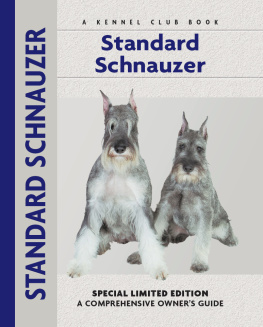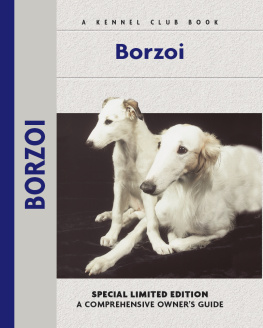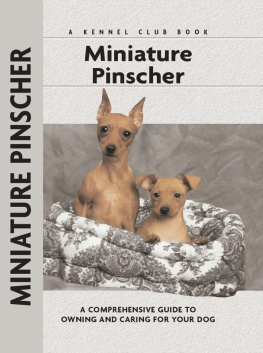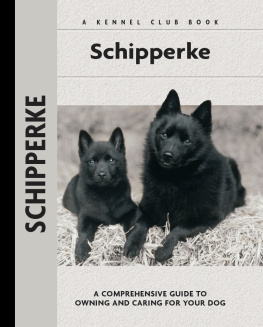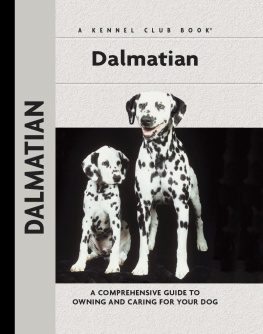Physical Characteristics of the Standard Schnauzer
(from the American Kennel Club breed standard)
Head: Strong, rectangular and elongated.
Skull: Moderately broad between the ears.
Ears: Set high, evenly shaped with moderate thickness of leather.

Neck: Strong, of moderate thickness and length, elegantly arched and blending cleanly into the shoulders.
Eyes: Medium size; dark brown; oval in shape and turned forward.
Muzzle Strong, and both parallel and equal in length to the topskull.
Nose: Large, black and full.
Lips: Black, tight and not overlapping.
Bite: A full complement of white teeth, with a strong, sound scissors bite.
Chest: Of medium width with well sprung ribs.
Forequarters:ShouldersThe sloping shoulder blades are strongly muscled, yet flat and well laid back. Forelegs straight, vertical and without any curvature when seen from all sides; set moderately far apart; with heavy bone; elbows set close to the body and pointing directly to the rear.
Topline: Should not be absolutely horizontal, but should have a slightly descending slope.
Back: Strong, firm, straight and short.
Tail: Set moderately high and carried erect. It is docked to not less than one inch nor more than two inches.
Hindquarters: Strongly muscled, in balance with the forequarters, never appearing higher than the shoulders. Thighs broad with well bent stifles. The legs, from the clearly defined hock joint to the feet, are short and perpendicular to the ground.
Coat: Tight, hard, wiry and as thick as possible, composed of a soft, close undercoat and a harsh outer coat which, when seen against the grain, stands up off the back, lying neither smooth nor flat.
Color: Pepper and salt or pure black.
Feet: Small and compact, round with thick pads and strong black nails.
Height: Ideal height at the highest point of the shoulder blades, 18.5 to 19.5 inches for males and 17.5 inches to 18.5 inches for females.

Contents

Read about the origins of the Standard Schnauzer breed, its evolution from German stock and its two popular offshoots, the Miniature and Giant Schnauzers. Meet early dogs and breeders and trace the Standard Schnauzers path through the centuries and surviving the World Wars to become a recognized breed around the world.
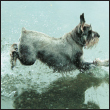
Learn about the breeds remarkable intelligence, versatility and trainability as well as its potential stubborn streak, propensity to bore easily, smartly furnished coat, unique sense of humor and potential health concerns. Find out if this medium-sized big dog is the right protector and companion for you and your family.
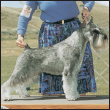
Learn the requirements of a well-bred Standard Schnauzer by studying the description of the breed set forth in the American Kennel Club standard. Both show dogs and pets must possess key characteristics as outlined in the breed standard.

Find out about how to locate a well-bred Standard Schnauzer puppy. Discover which questions to ask the breeder and what to expect when visiting the litter. Prepare for your puppy-accessory shopping spree. Also discussed are home safety, the first trip to the vet, socialization and solving basic puppy problems.
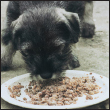
Cover the specifics of taking care of your Standard Schnauzer every day: feeding for the puppy, adult and senior dog; grooming, including coat care, ears, eyes, nails and bathing; and exercise needs for your dog. Also discussed are the essentials of dog identification.

Begin with the basics of training the puppy and adult dog. Learn the principles of house-training the Standard Schnauzer, including the use of crates and basic scent instincts. Get started by introducing the pup to his collar and leash and progress to the basic commands. Find out about obedience classes and training for other activities.
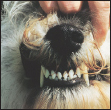
By Lowell Ackerman DVM, DACVD
Become your dogs healthcare advocate and a well-educated canine keeper. Select a skilled and able veterinarian. Discuss pet insurance, vaccinations and infectious diseases, the neuter/spay decision and a sensible, effective plan for parasite control, including fleas, ticks and worms.
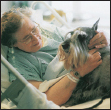
Know when to consider your Standard Schnauzer a senior and what special needs he will have. Learn to recognize the signs of aging in terms of physical and behavioral traits and what your vet can do to optimize your dogs golden years.
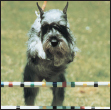
Step into the center ring and find out about the world of showing pure-bred dogs. Heres how to get started in AKC shows, how they are organized and whats required for your dog to become a champion. Explore some of the other competitive events in which the Standard Schnauzer participates: obedience, agility, tracking and herding.
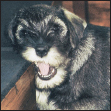
Analyze the canine mind to understand what makes your Standard Schnauzer tick. Behavioral issues discussed include various types of aggression, separation anxiety, chewing, digging, barking and food-related problems.
K ENNEL C LUB B OOKS S TANDARD S CHNAUZER
ISBN: 978-1-59378-324-2
eISBN: 978-1-59378-628-1
Copyright 2006 Kennel Club Books An Imprint of I-5 Press A Division of I-5 Publishing, LLC
3 Burroughs, Irvine, CA 92618 USA
Cover Design Patented: US 6,435,559 B2 Printed in South Korea
Library of Congress Cataloging-in-Publication Data
Dille, Barbara M.
Standard schnauzer : a comprehensive guide to owning and caring for your dog / Barbara Dille.
p. cm.
Includes bibliographical references (p. ).
ISBN 1-59378-324-8 (alk. paper)
1. Schnauzers. I. Title.
SF429.S37D55 2007
636.73--dc22
2006011508
10 9 8 7 6 5 4 3 2 1
Photography by: Paulette Braun, Bill and Catherine Dille Burdick, Lisa Croft-Elliott, Tara Darling, Isabelle Francis, Jerry Glazman, Carol Ann Johnson, Bill Jonas, Joel Levinson Photography, MikRon Photography, Photos by Susan and Lennah, Joe Rinehart, Tien Tran Photography, Michael Trafford and Lionel Young Photography.
Next page
